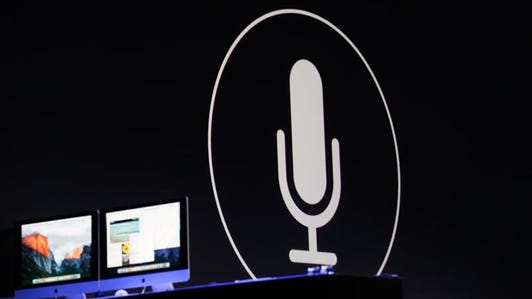This story is part of WWDC 2022, CNET’s complete coverage from and about Apple’s annual developers conference.

James Martin/CNET
Your iPhone plans to get to know you a lot better.
Apple on Monday revealed its newest mobile operating system, iOS 9, offering up a software platform for its iPhone smartphones and iPad tablets that is far more able to predict an owner’s needs and interests.
“On iOS 9, we’re bringing proactivity throughout the system,” Craig Federighi, senior vice president of software engineering, said before a crowd at Apple’s annual Worldwide Developers Conference in San Francisco.
Among some of the new features for iOS 9, which will be available this fall, the iPhone can learn about someone’s habits at particular times of day or in certain locations. For instance, the device could load up music selections ahead of regular morning runs or bring up an audiobook someone is listening to while in the car. The operating system can automatically suggest apps to load or people to contact based on a person’s usage patterns. IOS 9 also comes with updates to Siri to give the voice assistant a new interface and allow it to remind a user of appointments without being told to ahead of time.
More features will be automated in iOS 9 so, for example, emailed invitations immediately can be added to a person’s calendar app.
Federighi stressed that — in the interest of people’s privacy — the information used to generate these features won’t be mined by Apple.
Related stories
- Apple unveils iOS 9 at WWDC
- Apple spruces up Siri in iOS 9
- Apple launches News, another news aggregation app
- Apple brings iPhone’s gaming graphics software to Mac
“If we do a look-up on your behalf, such as traffic, it’s anonymous,” Federighi said. “It’s not shared with third parties. Why would you do that? You are in control.”
Apple, which updates iOS every year, needs to continually keep the system fresh to maintain customers’ interest in its products and ensure software developers keep making apps for its platform. The refreshes are also vital to keep Apple in step with competitors.
Making computers more predictive is a key trend for new products, with Google already providing some predictive capabilities on its Android operating system. Google Now , for example, can automatically present users with contextual cards relaying useful information, and the company in late May revealed its upcoming Google Now On Tap, which is a sort of “Help me, Google” button that tries to bring you information before you ask for it.
In addition to the predictive features of iOS 9, Apple’s Maps app was enhanced with more mass transit information, including schedules and subway station entrances, for certain major cities such as New York City, the San Francisco Bay Area, Mexico City and Beijing. The Notes app was refreshed and new multitasking features for iPads were created. Additionally, Apple unveiled an app called News, which is designed to aggregate various news sources into one easy-to-read interface.
Although Android powers more than three of every four smartphones worldwide, Apple’s iOS has enjoyed a few advantages over Google’s system. Many developers release their apps on iOS first before Android because they have traditionally made more money on iOS, thanks to Apple users’ higher spending on mobile devices. Also it’s often easier to make apps for Apple’s few devices instead of the dozens of different Android phones, tablets and smartwatches.
However, Android this year surpassed iOS in mobile ad revenue for the first time, according to a May report by Opera Mediaworks, which could become an issue for Apple.
The iOS 8 system, which Apple revealed at last year’s WWDC and launched in September, added much-desired features such as iCloud improvements, third-party app notifications and tighter links with Apple’s desktop operating system that allow users to start a task on a mobile device and then switch to a laptop. This year, iOS 8 added support for the Apple Watch.
The operating system, though, was hurt by bugs and other problems. The initial version of iOS 8 required several fixes, prompting a quick release of version 8.0.1. But 8.0.1 came saddled with even more glitches, requiring Apple to pull it and push out 8.0.2. Since then, Apple has been busy rolling out new updates with still more bug fixes.
Updated, 1:43 p.m. PT: Added more details on iOS 9 and new apps.
iOS 9: Here’s what Apple’s new mobile OS looks like (pictures)









